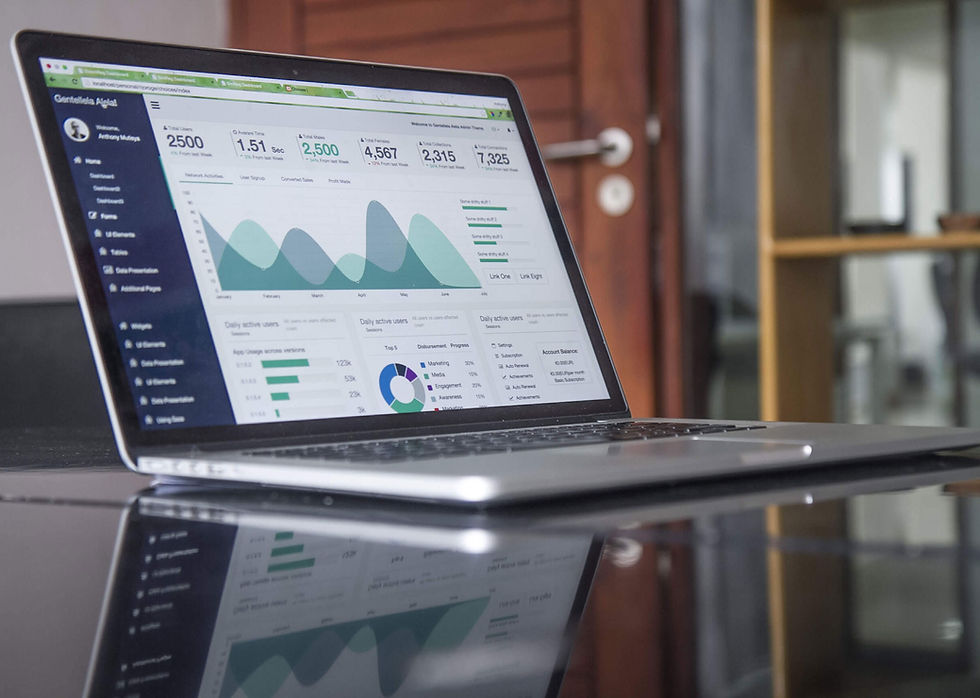Sales Forecasting
- Alex Law

- Feb 5, 2024
- 4 min read
Sales forecasting is the process of estimating future revenue by predicting the quantity of goods or services that will be sold in the following week, month, quarter, or year. Sales forecasting enables you to effectively allocate resources for future growth and manage the cash flow of your business.
It also helps your business accurately estimate its costs and revenues, allowing you to forecast its short and long-term performance.
If we could accurately predict the future, the world would be a very different and rather strange place. However, forecasting the future is something that all business owners must do for a variety of reasons, including setting realistic objectives and obtaining financing. Forecasting is one of the most difficult and frustrating tasks that business owners must perform, and few tasks cause as much anguish and soul-searching as sales forecasts – and far too often the business owner does not forecast honestly, which is one of the primary reasons that four out of five businesses will fail this year – typically because the business drifts into chaos.

Sales Forecasting
When you are trying to forecast your sales you should focus instead on exercising "informed judgment" rather than attempting to predict the future.
Many attempts at forecasting fail because business owners do not conduct sufficient investigation on their market, competitors, and target customers. It is a failure of laziness and lack of effort, not the forecasting process, that they are not completely informed when they make their predictions about what will occur.
It seems remarkable that so many business owners do so little investigation until you look at the stats that 4-in-5 of all businesses will fail this year – then it becomes obvious.
Always keep in mind that you can only influence a subset of the factors that influence your forecast, such as the number of potential customers you target, the efficacy of your promotional tools, and your pricing strategy.
There are additional factors that directly influence your prospects of success but are beyond your control. Some are known and can be reflected in the assumptions on which your forecasts are based, while others, such as the current precipitous increase in energy costs, can only be reacted to.
In my experience, business owners most frequently overestimate how much they can sell and how rapidly they can sell it. Avoiding this error is difficult enough, but it continues when estimating how much more our new, existing customers will continue to purchase; in my experience, almost all business owners presume that the customers they stole from a competitor will remain loyal to them indefinitely.
What occurs, for instance, if you intend to offer an existing product in a new market? If our competitors already offer a comparable product, what percentage of your sales will come from the market share you will take from them and what percentage will come from the market's continued growth?
Increased sales projections for existing consumers should be simple. Either we increase the quantity of existing products, begin selling them products they do not presently purchase, or we raise the prices. Too many business owners make no effort to determine whether the sale of a new product represents a one-time trial by the consumer or a genuine shift in where they purchase these products and services. In sectors with a large number of dissatisfied consumers (and in the age of social media which are not!), it is common for new products to begin well, but that does not guarantee that they will be the solution those consumers have been seeking.
Therefore, we are unable to make informed decisions, creating favorable ground for overestimating what can be sold.
To begin, we must determine how our product quality, lead times, and prices compare to those of our competitors, as well as how much it will cost to have our message heard over their promotional "noise." In order to gain market share at the expense of competitors, we must sell twice.
First, we must persuade the customer to cease purchasing from our competitors; then, we must persuade them to purchase our product, which may be unproven in this market. The majority of business proprietors, however, who are naturally optimistic and driven, grossly underestimate how long this will take.

A sales forecast is an estimate of the quantity of goods and services you can realistically sell during the forecast period, the cost of those goods and services, and, consequently, the gross profit estimate.
Typically, this is accomplished by:
Compiling a list of the products and services to be sold,
Estimating the quantity of each product or service to be sold,
Multiplying the unit price by the estimated number of goods or services to be sold,
Determining the cost of each good or service,
Multiplying the cost of each good or service by the estimated number of goods or services to be sold,
Subtracting the total cost from the total sales.
Among the many prospective sales-influencing factors that should inform your sales projection are:
Is the economy in recession?
Is the market for your products or services expanding or contracting?
Is there an increase in competition entering the market?
Do you anticipate gaining or losing any significant customers?
Will there be upcoming regulatory changes?
Are you introducing any new products or services that could boost sales?
Are sales of your existing products / services declining due to better products/services or reduced prices from competition?
Due to increased material, labor, or other costs, will you be compelled to raise prices, and how might this affect sales?
Do you plan to launch any new marketing campaigns?
Are advertising expenditures increasing or decreasing?
Do you regularly update your website?
Are you expanding your use of social media to increase sales?
Are you employing additional sales personnel or could you lose your top salesperson?



Comentários